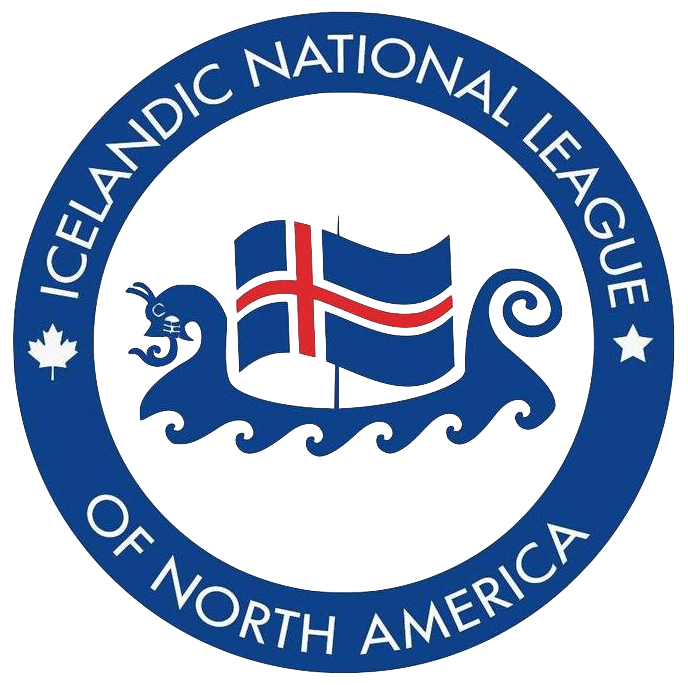Dr. Vigfus Samundur Asmundson, Ph.D.
(1895-1974)
Genetics, Poultry husbandry
Tantallon, SK, Davis, CA
Vigfus Samundur Asmundson (Vigfús Sæmundur Ásmundsson) had a distinguished career as a scientist conducting pioneering research in poultry science and poultry genetics.
Vigfus was born on September 24, 1895, at Reykjavik, Iceland. His father, Ásmundur Magnússon, a fisherman, drowned at sea when Vigfus was two years old, leaving him and his older sister, Thora, to be supported by their mother, Helga Vigfúsdóttir. Following her death six years later, their maternal aunt, Anna, and her husband, Narfi Vigfússon, arranged for the two orphans to join them on a farm near Tantallon in Canada, where this couple had settled the previous year. The following year, the territory became part of a new province, Saskatchewan. Asmundson was registered in the first class in agriculture at the University of Saskatchewan in 1912 and worked at the University poultry plant. He received an associate certificate in 1915, and then entered a degree program from which he received a B.S.A. degree in 1918. Graduate study followed at Cornell University leading to an M.S.A. degree in 1920.
Asmundson was appointed to the staff of the Poultry Husbandry Department at the University of British Columbia in 1920, where he progressed through the stages of instructor to associate professor during the next twelve years. Responsible for a genetic program with chickens, he gained international attention in 1926 for producing what was then a world record pen and individual hen for annual egg production. He took graduate work at the University of Wisconsin during a period of leave from the University of British Columbia and was granted a Ph.D. degree in genetics and poultry husbandry in 1930 under Professor L. J. Cole.
In the depths of the depression of the 1930s, appropriations for the departments of agriculture at the University of British Columbia were severely curtailed, and the junior staff position held by Asmundson was eliminated in 1932. He then went to the University of California at Berkeley as an associate in poultry husbandry where he completed publications of his previous research on the formation of the chicken egg.
He was appointed assistant professor at Davis in 1933 and was given the special charge of developing a research program using turkeys as the experimental animal. He was in charge of poultry research and instruction on the Davis campus from 1933 to 1951. Several of his students became leaders in the U.S. poultry industry. His research findings on egg formation and production, on species hybrids, on the photoperiodic requirements for turkey reproduction, on the genetics of growth, body size, and conformation, on lethal genes, and on plumage colors and patterns have been widely quoted.
His turkey research laid the basis for changes in management and breeding of this species to commercial reproduction at any season from the period originally restricted to the spring months. He also investigated a form of avian muscular dystrophy that became a model for studies of this disease in man. This phase of his research, conducted with students and colleagues at Davis, produced valuable information on the development of this disease and received support from the National Institutes of Health--U.S. Public Health Service and the U.S. Department of Agriculture Regional Research funds. He became a professor emeritus in 1967. In 2014, some of his publications could still be purchased here: http://www.alibris.com/search/books/author/Asmundson,-V.S
Many honors came to Professor Asmundson: the Poultry Science Research Prize, 1931; Borden Award in Poultry Science, 1942; National Turkey Federation Award, 1947; Davis Faculty Research Lecturer in 1947; an honorary LL.D. from the University of California, Davis, 1964; and the signal honor of the dedication of the Department of Avian Sciences building at Davis as the Vigfus S. Asmundson Hall, in 1970 (https://archive.is/1IGvy/image). He served on many important and prestigious faculty committees of the Davis campus. He was a Fellow of the American Association for the Advancement of Science and of the Poultry Science Association. Other memberships were held in the World's Poultry Science Association, American Genetics Association, Society for Experimental Biology and Medicine, Society for the Study of Evolution, and the Genetics Society of America.
Dr. Asmundson died September 10, 1974, survived by his wife Aline. The couple had four sons, two daughters, and 12 grandchildren. A modest and dedicated person, Dr. Asmundson overcame misfortunes early in life and the handicap of poor eyesight through an intense devotion to research and teaching. His scholarly endeavors brought him the merited esteem of his students, his colleagues, and an industry that benefited immeasurably from his work. When he retired, university alumni established an endowment to support outstanding avian science students.
(This biography was written by academic colleagues in 1974 and edited and updated by family members in 2014.)



